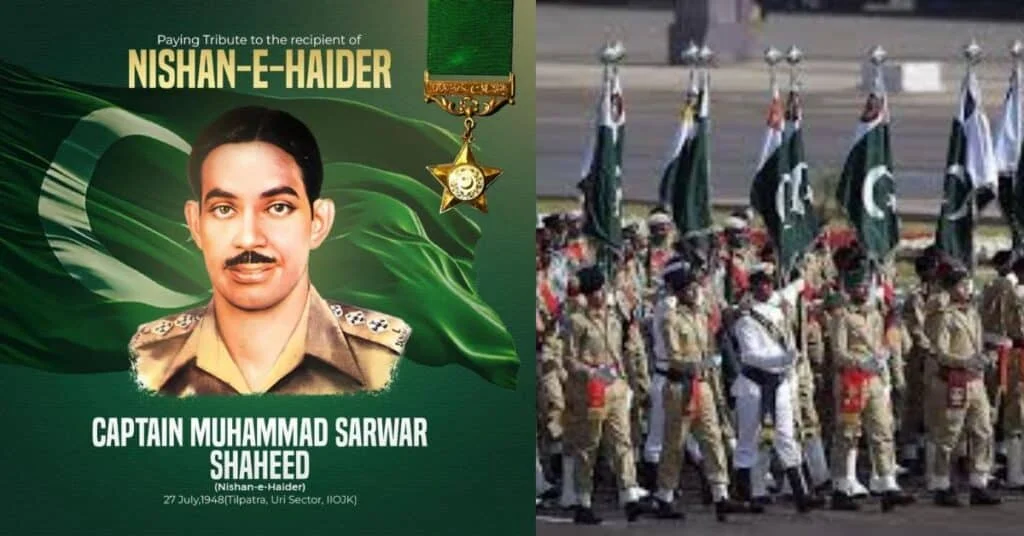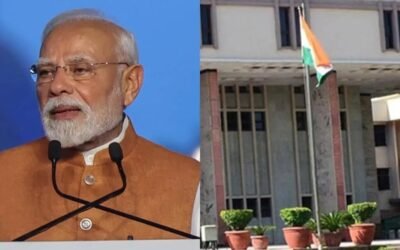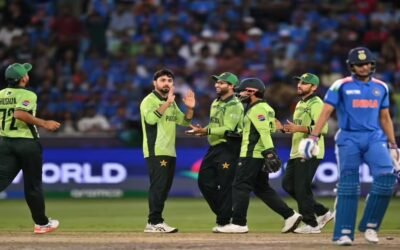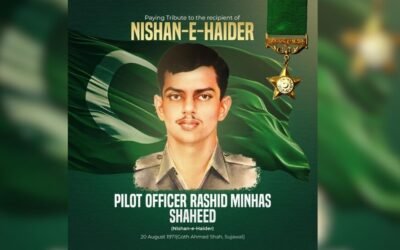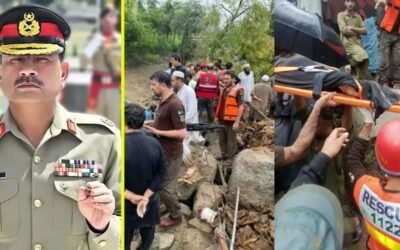Some names are not buried with time. They live on—not merely in brass plaques or military archives, but in the heartbeat of a nation struggling to live up to the ideals they died for. Captain Muhammad Sarwar Shaheed, the first to receive Pakistan’s highest military honor, the Nishan-e-Haider, is one such name.
On July 27, we remember him not just as a soldier of 1948, but as the first inscription on a long list of sacrifices that built the scaffolding of this fragile republic.
The Armed Forces of Pakistan solemnly commemorate the 77th martyrdom anniversary of Captain Muhammad Sarwar Shaheed, Nishan-e-Haider.
As the first recipient of the Nishan-e-Haider, Captain Muhammad Sarwar Shaheed laid down his life on 27 July 1948 during the First Kashmir War at… pic.twitter.com/M5dY5C8NnP
— DG ISPR (@OfficialDGISPR) July 26, 2025
A Life Anchored in Service
Born on November 10, 1910, in Singhori village, Gujjar Khan Tehsil, Sarwar Bhatti was never far from uniformed duty. His father, Raja Muhammad Hayat Khan, had already worn the scars of World War I. Young Sarwar followed suit—first as a sepoy in 1929, in the 2nd Battalion of the 10th Baloch Regiment, and eventually, by 1944, as a commissioned officer in the Punjab Regiment.
He fought in World War II, serving far beyond the dusty confines of his village. But perhaps fate had saved his most defining battle for a land not yet born. When Pakistan emerged in 1947, Captain Sarwar didn’t pause. His oath shifted, clean and instant. There was no ambiguity. The flag had changed—his loyalty did too.
Kashmir, 1948: The Crucible of Fire
Captain Sarwar volunteered for the Kashmir front, where conflict had already begun to define the fragile borders of partition. His unit, the Second Battalion of the Punjab Regiment, was deployed in the Uri Sector, an area critical to Pakistan’s strategic security.
On July 27, 1948, Captain Sarwar led an assault against heavily fortified Indian positions at Tilpatra Ridge. What followed wasn’t just a skirmish—it was a moment that would burn itself into military memory.
Under intense machine-gun, grenade, and mortar fire, he advanced—refusing cover, refusing retreat.
When his machine-gunner was martyred mid-assault, Sarwar picked up the weapon himself, returning fire, holding the line. Then, crawling under fire, he reached within grenade range of an enemy bunker and neutralized it himself.
But the path forward was blocked—a barbed-wire barrier, impossible to cross without exposing one’s body. Captain Sarwar didn’t hesitate. With six men, he went forward and began cutting it down.
And then, the inevitable: a burst of enemy fire, directly to the chest. Severely wounded, he continued cutting, not stopping until the barrier fell. His soldiers, galvanized by his final cry of “Allah-o-Akbar,” surged forward and captured the ridge.
Captain Sarwar never made it back.
A Martyr’s Rest in Occupied Soil
He died not just for an objective, but to create space for his men to live, to move, to win. His body was laid to rest at Tilpatra, which now lies within Indian-Occupied Kashmir—a bitter footnote, yes, but perhaps also a fitting symbol. Even in death, he remains stationed at the frontier.
His reported last words: “Long live Pakistan.” The kind of phrase that sounds ceremonial now, but when said by a dying man, becomes something else entirely.
What the Nishan-e-Haider Represents
Captain Sarwar was posthumously awarded the Nishan-e-Haider, becoming the first of only eleven soldiers ever to receive the decoration. It is not given for rank, nor politics, only for those who choose certain death for the sake of uncertain victory.
The name translates to “Mark of the Lion.” It is not a metaphor. It is a reminder that while many may wear the uniform, few ever walk into death so others can live to fight another day.
A Tribute, or a Transaction?
Today, tributes are paid. President Asif Ali Zardari and Prime Minister Shehbaz Sharif have issued their statements. The Armed Forces have saluted. Schools may host ceremonies. A few well-edited social media reels will circulate.
But Sarwar’s sacrifice was not a one-day event.
It was a standard, not a symbol. And in a time when national commitment often bows to convenience, his story urges reflection. Are we building the kind of Pakistan that justifies what he gave up for it?
Final Word
Captain Muhammad Sarwar Shaheed was not just the first martyr in uniform—he was the first to say, with his body, that this land is worth dying for. He was the first to prove that a nation still finding its voice could still have heroes with clarity, conviction, and courage.
We must ask ourselves—what are we doing with the Pakistan he helped protect?
Because some sacrifices are too sacred for silence, and too powerful to be recycled into yearly rituals, they demand something more. Something better.

